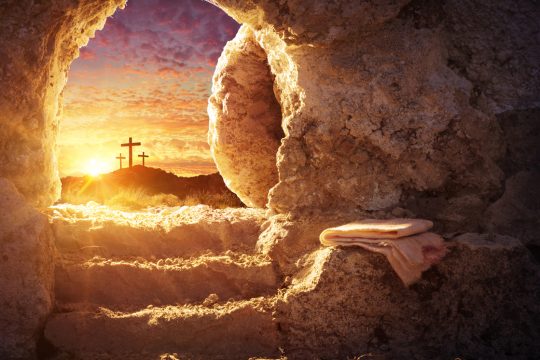
The Easter Season and Springtime are wonderful times of the year…the days are longer and brighter, we’re all looking forward to the year unfolding before us, and opportunities for happiness at times appear limitless. Sure, it’s been another difficult year, and many of us have grave concerns, or at least a degree of uneasiness, about world events, but we’re human and we know deeply that the human spirit can help us all keep a positive outlook and a resolve to meet the challenges all of us face…together. As our readers know, our messages here at the AMAC Foundation tend to lean in the direction of helpfulness and positivity, and our mission of supporting and educating America’s Seniors is focused squarely in that direction.
So, consistent with our editorial theme, we’re sharing several little-known tidbits about Easter that you can use to entertain family and friends during your Holiday gathering tomorrow. We tracked them down on Good Housekeeping’s website, and have selected some of the more esoteric information pieces. Here goes:
- In the old days, pretzels were associated with Easter. Why? Because the twists of this salty treat resemble arms crossing in prayer. We say it’s time to bring back this savory snack to the sweets-filled holiday because life is all about balance.
- Around 90 million chocolate bunnies are sold for Easter. Considering $2.6 billion is spent on candy alone during this religious and secular spring celebration, it makes sense. Oh, and that’s only in the United States. We bet most of those people have opinions on whether to devour theirs tail or ears first. And not only that, A surprising 59% of people eat the ears first. Only a handful start with the feet or tail, and the rest apparently don’t have a plan of action. If that’s you, consider this your inspiration to give it a little thought before cracking into yours (or the kids’).
- While we’re on candy, Americans consume over 16 million jelly beans during Easter. That’s enough jelly beans to circle the globe not once, not twice, but three times — or to fill a plastic egg the size of a nine-story building. First introduced as an Easter treat in the 1930s, we can’t imagine this day without them.
- In fact, Easter and Halloween compete for the highest candy sales. The two holidays go head-to-head for the most candy sales every year. In fact, some years people buy more candy the week before Easter than the week before Halloween, but that’s because Halloween purchases are more spread out over the month leading up to the spooky night.
- There’s a reason you probably eat ham for Easter dinner. Historically, most early Easter celebrants would have eaten lamb for this special occasion since the holiday has its roots in Jewish Passover. But these days, many American Easter dinners now feature ham instead, because of the timing of the holiday. Years ago, hams cured over the winter months would have been ready to serve in the early spring.
- Easter baskets have special symbolism. The woven treat containers represent birds’ nests and new life, especially when filled to the brim with eggs. Plus, they’re a pretty utilitarian way to gather those goodies on your Easter egg hunt.
There are many more morsels of information available on the Good Housekeeping site, and you can access that site here. But before we leave, let’s reflect for a moment on the more serious side of Easter…that being it’s purely religious connotation that mankind’s most significant enemy–death–has been symbolically conquered through the resurrection. Easter means there is hope for us, after all. As Jesus said, “Because I live, you also will live” (John 14:19).
So, with that, here’s a toast to Easter 2022: May your troubles be less…May your blessings be more…May nothing but happiness come through your door!
Subscribe
Sign Up for Our E-Newsletter!
Stay up-to-date on all of the topics you care about by subscribing to our quarterly newsletter emailed directly to your inbox!
SubscribeSubscribe
Sign Up for Our E-Newsletter!
Stay up-to-date on all of the topics you care about by subscribing to our quarterly newsletter emailed directly to your inbox!
Subscribe